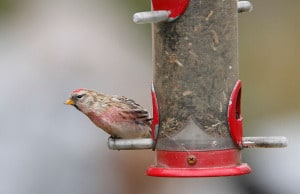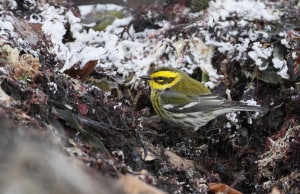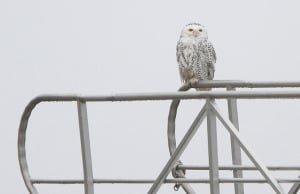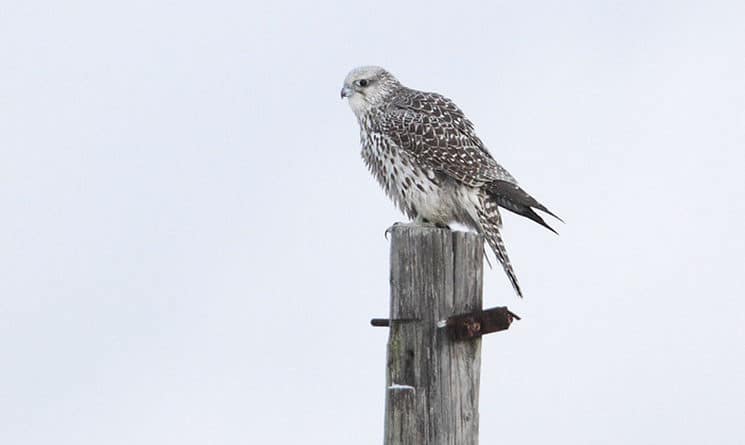When it comes to counting birds, Len Medlock’s philosophy is simple: Every chickadee is important. Medlock is one of New Hampshire’s 21 coordinators for the Audubon Society’s annual Christmas Bird Count. The event, now in its 115th year, tasks bird enthusiasts across the country with venturing out into woods and fields for a day and tallying which birds they find.
“The Christmas count is a good way to produce data for science, but it’s also a way to get away from the holiday hustle and bustle and get out doors and walk around and see nature,” Medlock says.
Each year, Medlock and other birdwatchers brave cold temperatures and foul weather and collect data about which birds they see. Each state is divided up into “count circles,” a region 15 miles in diameter around a central location. The Seacoast has three circles — one centered on Lee and Durham, another on the Isles of Shoals, and a coastal circle covering Portsmouth, Hampton, and Exeter. The count officially begins on Dec. 14 and ends on Jan. 5, although it’s up to each circle’s coordinator to set a date for their count. York County Audubon is holding a bird count on Dec. 15.

Medlock coordinates the coastal circle. He’s been doing it for four years, though he says the coastal circle is one of the oldest bird-count circles in the state. This year, Medlock and his team of volunteers will set out before sunrise on Saturday, Dec. 20, with binoculars and notebooks and spot as many different birds as they can. At the end of the day, the counters gather together and report their findings, which Medlock and other coordinators then send off to the Audubon Society.
“They use those records to look at trends in bird populations,” he says. For example, the yellow-bellied sapsucker was previously a rare sight during the annual count. In the last five years, though, it’s become a more frequent site. “We don’t know if it’s a change in habitat or in weather, but it’s a bird we can almost expect now,” Medlock says.
Kurk Dorsey has been the Lee-Durham circle coordinator for 12 years. His first destination during each Christmas count is the Lamprey River Preserve in Newmarket, a good place to spot a ruffed grouse or hear a barn owl. He checks areas around the Lamprey River throughout the day, looking for gulls, ducks and other birds. Dorsey and his volunteers end their day with dinner in Newmarket, where they compile results and discuss what they saw.
“It’s an excuse to go birding when things are grey and cloudy,” Dorsey says. “Many of the people who we have dinner with are old birding pals. It’s a tradition, and it’s a good thing to do. When everyone else is at the mall, you’re in the woods.”

Dorsey, a history professor at the University of New Hampshire, says the Christmas Bird Count began as part of the American conservation movement in the late 19th century. During the traditional Christmas day “side-hunt,” upper-class men would go out into fields and woods (each man would take a different “side” of the property) and hunt as many birds as they could. In 1900, ornithologist Frank Chapman proposed observing and counting the birds rather than hunting them. The Audubon Society helped make it a yearly tradition.
For Dorsey and Medlock, traipsing around outside and watching birds is its own reward. But they both say it’s also exciting to spot an uncommon bird. “We count everything,” Medlock says. “But it’s nice when you get a rarity like a … warbler that should be down south in the tropics, but happens to be here because there’s enough food around.”
Those sightings often lead to great conversations and debates. One year, a volunteer reported seeing a spotted sandpiper, a bird that should’ve been gone from the region two months earlier. “One of the old, established birders said, ‘Are you sure it wasn’t a common sandpiper,’ a species from Europe?” Dorsey says, and that kicked off a debate about how and why common sandpipers might have made it here all the way from Europe.
The bird count is open to anyone, and, for those who can’t make it out to the field, Audubon also accepts reports from “feeder watchers,” who keep an eye on the birds in their backyard. “You don’t even need to get out there in the cold; you can always do it from your kitchen window,” he says.
To take part in this year’s Christmas Bird Count, visit nhaudubon.org for details and a list of local coordinators.


